Global Water Issue
“지능형 모니터링으로 하·폐수처리 운영 효율성 향상”
스마트 기술과 결합 시 하·폐수 시설의 운영 효율성 획기적 향상 기대
데이터 수동 입력으로 발생하는 시차로 인한 환경·안전 문제 해결 가능
기술 중심의 미래를 향해 - 지능형 모니터링을 통한 하·폐수처리 운영 효율성 향상
Toward a Technology Driven Future - Improving operational efficiency of wastewater treatment with intelligent monitoring
효율적이고 지속가능한 하·폐수 처리 시스템은 환경에 매우 중요하다. 지속가능성을 유지하기 위해서는 지속적인 모니터링을 통해 일관성 있고 규제된 품질을 보장해야 한다. 특히, 다양한 수준의 독성물질을 포함한 하·폐수 속 물질을 모니터링하는 데에 지능형 경보, 원격 수동 데이터 입력 옵션 등의 기술을 적용하면 시설의 운영 효율성을 크게 끌어올릴 수 있다. 지난 5월 7일자 『Water World』에 실린 ‘Toward a Technology Driven Future - Improving operational efficiency of wastewater treatment with intelligent monitoring’ 기사에 이러한 내용이 소개됐다. 그 내용을 번역했다.
4차 산업혁명 기로에 선 우리
우리는 기술의 통합과 자동화로 환경의 지속가능성 및 효율성을 향상시킬 4차 산업혁명의 기로(길목)에 서 있다. 효율적인 하·폐수 처리 시스템은 환경에 매우 중요하며, 지속가능성을 유지하기 위해서는 지속적인 모니터링을 통해 일관성 있고 규제된 품질을 보장해야 한다.
하·폐수 내에 분산된 모든 물질은 다양한 수준의 독성을 갖고 있지만 물질의 위험 또는 안전성 정도는 수생 환경에 도달하는 양으로 측정되어야 한다. 독성물질을 관리하고 규제 및 환경 표준을 준수하기 위해 하·폐수 시설은 원격으로 화학물질 및 미네랄 수준에 대한 실시간 가시성을 제공하는 기술과, 조치를 취해야 할 시점을 파악할 수 있는 기술을 활용해야 한다.
하·폐수 시설의 운영 효율성은 정확하고 즉각적인 실시간 정보를 제공하는 지속적인 모니터링 플랫폼의 통합, 지능형 경보, 효율성 분석 및 원격 수동 데이터 입력 옵션과 결합하면 추가적인 노력 없이 크게 개선할 수 있다. 이러한 기술은 하·폐수 플랜트가 기존 자원을 활용하여 스마트 플랜트(smart plants)로 탈바꿈할 수 있도록 지원한다.
We have arrived at a crossroads of what some are calling the fourth industrial revolution, where the emergence of a technology-integrated and automated future is enhancing environmental sustainability and efficiency. Efficient wastewater treatment systems are extremely critical to the environment; and to maintain sustainability, they must be continuously monitored to ensure consistent, regulated quality.
All substances dispersed within wastewater can have varying levels of toxicity, but the degree of risk or safety of a substance must be measured by the amount that reaches the aquatic environment. To manage this and stay in compliance with regulatory and environmental standards, wastewater facilities need to leverage technologies that provide them with continuous real-time visibility into the chemical and mineral levels at remote wastewater sites, and the knowledge to understand when actions should be taken.
The incorporation of continuous monitoring platforms that provide accurate, immediate, and real time information; combined with intelligent alerts, efficiency analytics, and remote manual data entry options, can substantially improve a wastewater utility’s operational efficiency and compliance, without any additional effort. This technology helps wastewater plants, leveraging their existing resources, to transform themselves into smart plants, with better and faster information to achieve quicker and more proactive results.
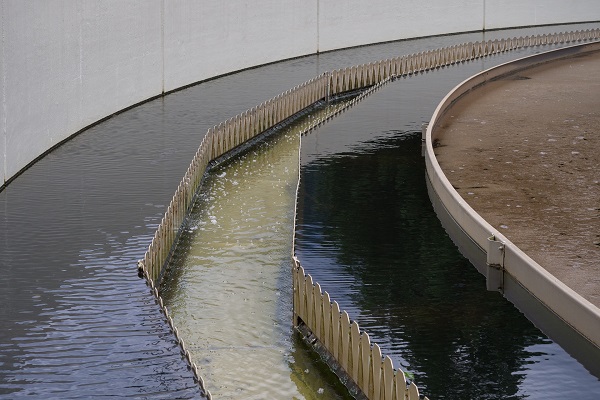
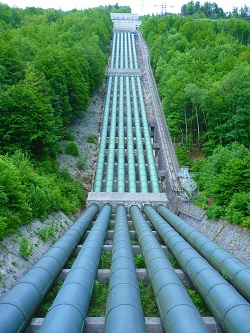
Establishing visibility with continuous monitoring
베이스라인(baseline) 가시성을 확보하기 위해 하·폐수 처리시설은 지속적인 모니터링을 구축해야 한다. 이러한 방법은 시설에서 가장 먼 곳까지 일년 내내 모바일 데이터 가시성을 제공한다.
이는 하·폐수 공익사업(utility)의 주요 관심사다. 지속적인 모니터링은 공급업체와 상관없이 사용가능한 센서들을 통해 수집된 여러 소스의 데이터 세트를 통합하고 정규화한다. 수집된 후에는 즉시 사용 가능하지만 사용자 정의가 가능한 대시보드를 통해 언제 어디서나 모든 데이터를 쉽게 볼 수 있다.
지속적인 수질 모니터링을 통해 모든 사용자는 인터넷 브라우저, 태블릿 또는 스마트 폰에서 이 정보를 표시함으로써 수질 수준(water quality level)에 참여하고 보장받을 수 있다. 더 이상 계획되지 않은 비상 드라이브를 플랜트로 보내거나, 클립보드에 광범위한 데이터를 입력하거나, 문제를 조사하기 위해 VPN(가상사설망) 또는 플랜트에 액세스할 필요가 없다.
센서 데이터를 주의 깊게 모니터링하는 지능형 경보를 추가하면 핵심성과지표(KPI)가 임계값 내에 유지된다. 임계값을 초과하면 지능형 경보가 취해야 할 시정 조치에 대한 정보를 대상으로 작업에 적합한 개인에게 알릴 수 있다. 이 정보는 원 자료뿐만 아니라 더 큰 문제로 변하기 전에 사전예방적으로 문제를 피할 수 있는 방법을 제공한다.
To establish baseline visibility, wastewater treatment facilities need to establish continuous monitoring. These methods provide 24/7 mobile data visibility from the facility to the most remote locations which is a key concern for wastewater utilities.
Continuous monitoring incorporates and normalizes data sets from multiple sources, collected through vendor-agnostic sensors. Once collected, all the data is easily viewed, in context, anytime and anywhere, with out-of-the-box, but customizable dashboards.
Continuous water monitoring enables all users to participate and ensure water quality levels by displaying this information from any Internet Brower, tablet or smartphone. There is no longer a need for unscheduled emergency drives to the plant, entering extensive data on clipboards, or requiring access to a VPN or the plant to investigate the issues.
The addition of intelligent alerts that carefully monitor sensor data ensures that the key performance indicators(KPIs) remain within critical threshold values. If a threshold is exceeded, intelligent alerts can notify the right individual for the job with targeted information around corrective actions that should be taken. This information, not just raw data, provides a way to avoid issues proactively before they turn into bigger problems.
운영과 경보에 인텔리전스 추가
Adding intelligence to operations and alerts
현장 기술자와 지역 시설 운영자 간의 의사소통은 매우 중요하다. 작업 경보 시스템과 지속적인 모니터링의 통합은 문제에 대한 경고 외에도 필요한 작업변경을 자동으로 수행하고 예측되는 유지보수를 알리며 예정된 작업을 사전에 파악하는 데 도움이 된다. 이러한 통합은 엔드 투 엔드(end-to-end) 추적을 제공하여 중요한 문제를 조기에 파악할 수 있을 뿐 아니라 해결을 통해 도출할 수 있다. 정보의 가용성을 통해 현장 기술자와 운영자는 이러한 중요한 문제에 대한 적절한 조치가 가능한 한 빠른 시간 안에 배포되고 일관되게 해결되도록 중요한 사항에 집중하고 우선순위를 지정할 수 있다.
고장 감지 및 진단(FDD)과 결합된 지속적인 모니터링은 독립적인 소규모 작업 순서 시스템으로 작동하여 수행할 작업의 우선순위를 정하고 할당할 수 있다. 또는 자신의 작업 지시 소프트웨어와 쉽게 통합해 적절한 스케줄링을 위한 시정 조치를 제공하여 사용자가 편안한 속도로 자동화로 이동할 수 있도록 한다.
이러한 신기술을 점진적으로 적용함으로써 얻을 수 있는 주요 이점은 원격으로 시각화 및 알림을 받을 수 있고 결과를 수동으로 제어할 수 있는 동시에 작업자가 자동화된 시스템에 대한 편안함과 신뢰를 얻을 수 있다는 점이다.
Communication is vital between field technicians and local plant operators. In addition to alerting of issues, the integration of continuous monitoring with Work Order systems can help to automatically drive the necessary corrections, notify for predictive maintenance, and proactively keep up with scheduled tasks. With this integration, it’s possible to provide end to end tracking to ensure critical issues are not only identified early but driven through resolution. The availability of information allows the field technicians and operators to focus and prioritize on what is important to ensure that the appropriate actions, for these critical issues, are disseminated quickly and resolved consistently, in the shortest timeframe possible.
Continuous Monitoring, combined with Fault Detection and Diagnostics (FDD) can act independently as a small Work Order System to prioritize and assign the work to be accomplished, or can easily integrate with your own work order software to feed the corrective actions for appropriate scheduling, allowing users to move toward automation at a rate they feel comfortable.
The key benefit of applying these new technologies gradually, in a more hybrid approach, is to provide the benefits of remote visualization and notifications, while still allowing manual control over the results, while the operators are obtaining a level of comfort and trust with the automated system.
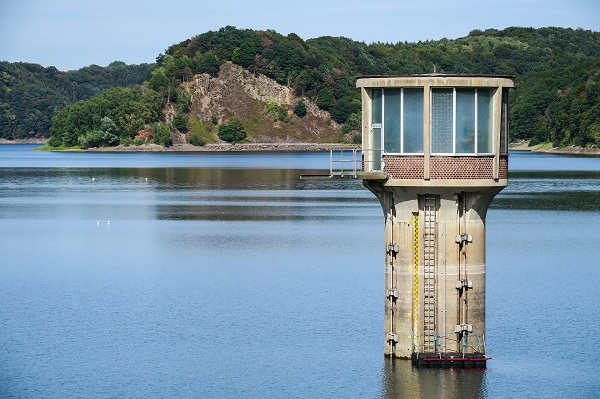
운영 효율성에 초점
A focus on operational efficiency
하·폐수 처리로 운영 효율성을 극대화하려면 먼저 다양한 시스템과 장비에서 불필요한 수작업을 줄여야 한다. 필요하지만 실시간으로 제공되지 않는 데이터는 역사적으로 종이에 입력되어 추후 원격감시제어시스템(SCADA 시스템)을 통해 처리되었다. 수동으로 입력한 중요 데이터가 임계값을 초과해 즉각적인 조치가 필요한 경우 이 정보는 몇 시간(또는 하루) 동안 알려지지 않을 수 있으며 환경 및 안전 문제뿐만 아니라 규정 비준수를 초래할 수 있다. 수동 데이터 입력(MDE, Manual Data Entry)이 포함된 지속적인 모니터링 플랫폼(Continuous Monitoring Platforms)을 통해 계측되지 않은 데이터에 즉시 액세스하여 중요한 문제를 즉각적으로 분석하고 알아차릴 수 있다.
이러한 MDE 시스템을 사용하면 셀룰러(cellular) 데이터 또는 와이파이(Wifi)에 액세스하지 않고도 데이터를 입력하고 저장할 수 있다. 인터넷에 연결되면 이 데이터는 즉시 플랫폼에 동기화되어 경보(알림) 및 분석에 사용할 수 있다. 따라서 현장 기술자가 원하는 거의 모든 휴대(모바일) 기기를 사용하고 어디서나 작업을 수행할 수 있으며, 데이터를 한번에 입력할 수 있어 수동 데이터 입력이 간소화된다(노력과 인적 오류가 크게 줄어든다). 오늘날 환경에서 더 중요한 것은 다른 사람이나 플랜트에 액세스하지 않고도 데이터를 원격으로 입력할 수 있도록 한 것이다.
상하수도 운영자는 지능형 경보(알림)를 포함한 지속적인 모니터링 패키지로 추가 효율성을 얻을 수 있다. 이 ‘스마트한’ 경보 시스템은 데이터를 이해하고 센서 문제 및 플랫 라인(flat-lined) 데이터를 포함해 품질이 좋지 않은 데이터를 탐지할 수 있다. 실제 문제인지 센서 불량인지 구별하는 것은 성가심(번거로움)과 재난의 차이를 의미할 수도 있다.
To maximize operational efficiency with wastewater treatment, you first have to reduce any unnecessary manual labor across the various systems and equipment. Data that is required, but not coming in real time, has historically been entered on paper and later processed through a SCADA system. If the manually entered critical data surpasses the threshold limits and demands immediate action, this information may not be known for hours (or a day) and can result in environmental and safety issues, as well as regulatory non-compliance. Continuous Monitoring Platforms with Manual Data Entry(MDE), allows instant access to the non-instrumented data for immediate analysis and immediate notification of critical issues.
With these MDE systems, data can be entered and saved without access to cellular data or WiFi. Once connected to the internet, this data is instantly synced to the platform and available for alerting and analysis. This simplifies manual data entry by allowing field technicians to use almost any mobile device they want, perform their work anywhere, enter the data once (which will substantially reduce effort and human error) and, more importantly in today’s environment; allow the data to be entered remotely without access to others or the plant.
Water and Wastewater operators can also gain additional efficiency with a Continuous Monitoring package that includes Intelligent Alerting. These “smarter” alerting systems understand the data and can provide detections of bad quality data, including sensor issues and flat-lined data. The ability to distinguish between a real issue and chasing a bad sensor reading could mean the difference between an annoyance and a disaster.
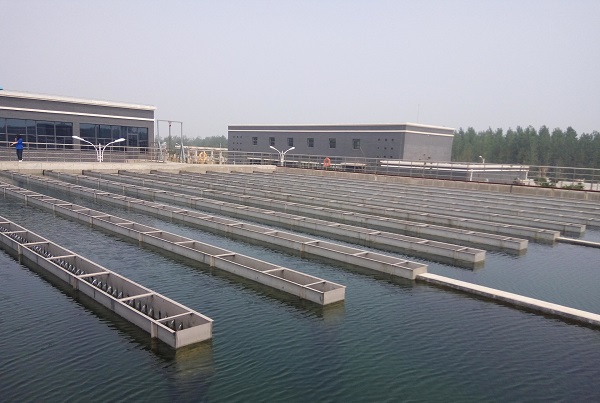
기술 중심의 미래 생각해보기
Looking to a technology-driven future
하·폐수는 세계에 막대한 영향을 미친다. 새로운 코드, 표준 및 규정은 유틸리티 관리자들이 해오던 비즈니스 방식을 바꾸고 있다. 최종결과(the bottom line)를 제어하는 데 도움이 되는 운영 효율성에 집중하면서도 이러한 새로운 규정을 준수하는 것은 앞으로 몇 년간 매우 중요할 것으로 예상된다. 기술을 받아들이지 않는 사람들은 보조를 맞추는 데 어려움을 겪을 것이다.
지속적인 모니터링 및 결함 감지 소프트웨어는 장비 사용을 최적화하면서도 하·폐수 산업의 효율성을 최대 20%까지 높일 수 있는 능력을 제공하고, 잠재적인 새로운 문제가 발생하지 않도록 하면서 실제 문제에 집중할 수 있는 더 많은 시간을 허용한다.
고장 감지 및 진단(FDD)과 함께 하·폐수 문제에 대한 즉각적이고 실질적인 답변을 제공하는 스마트 분석 기능으로 운영 효율성 및 장비 최적화가 더욱 강화된다. 하·폐수 문제를 해결하는 일은 효율성을 향상시키는 것 뿐만 아니라 현재와 미래의 건강하고 안정적인 환경을 보장하는 일을 최우선으로 해야하는 것임을 기억해야 한다.
Wastewater has an immense impact on the world. For utility managers, new codes, standards, and regulations are changing the way they do business. Adhering to these new regulations, while focusing on operational efficiency to help control the bottom line, is going to be key in the years ahead. Those who do not embrace technology will have a hard time keeping up the pace.
Continuous Monitoring and fault detection software are offering the wastewater industry the ability to increase efficiency up to 20%, while optimizing the use of their equipment; allowing more time to focus on the real issues, while keeping potential new issues from occurring.
Together with FDD, operational efficiency and equipment optimization is further enhanced with smart analytics that provide immediate and real answers to your wastewater issues. Remember, the goal of addressing wastewater problems aren’t only to provide efficiency savings, but to ensure a healthy and stable environment now and for the future.
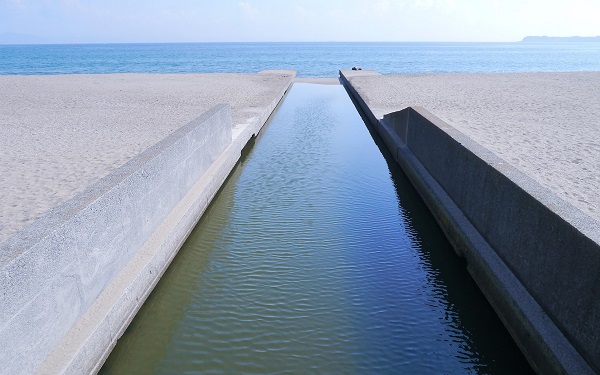
저자소개 FacilityConneX(www.facilityconnex.com)의 론다 랜디스(Rhonda Landis) 운영 부사장은 모든 운영 및 고객 성공(customer success) 전략을 책임진다. 이전에 그는 오토마테크(AutomaTech)의 서비스팀을 이끌었으며 GE 인텔리전트 플랫폼(GE Intelligent Platforms, 이전 GE Fanuc)에서 여러 수석 엔지니어 역할을 수행했다.
[출처 = Water World(https://www.waterworld.com/water-utility-management/asset-management/article/14175510/toward-a-technology-driven-future) / 2020년 5월 7일자]
[『워터저널』 2020년 6월호에 게재]

